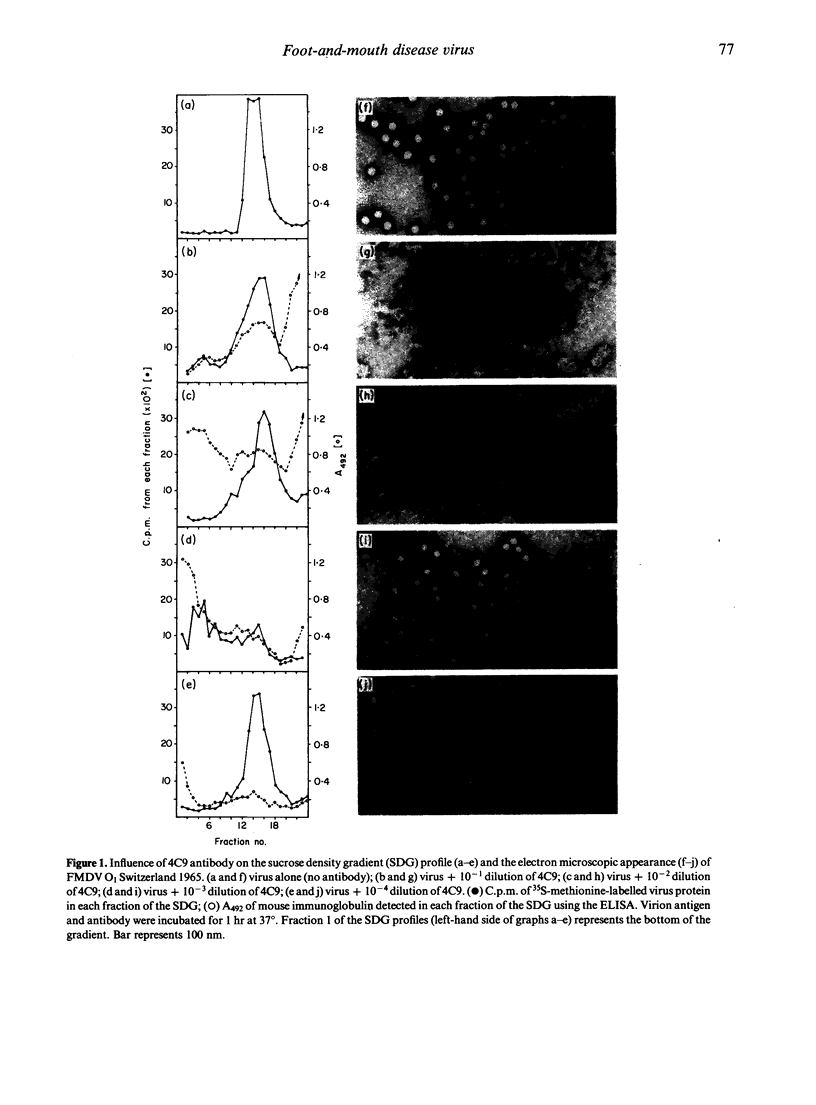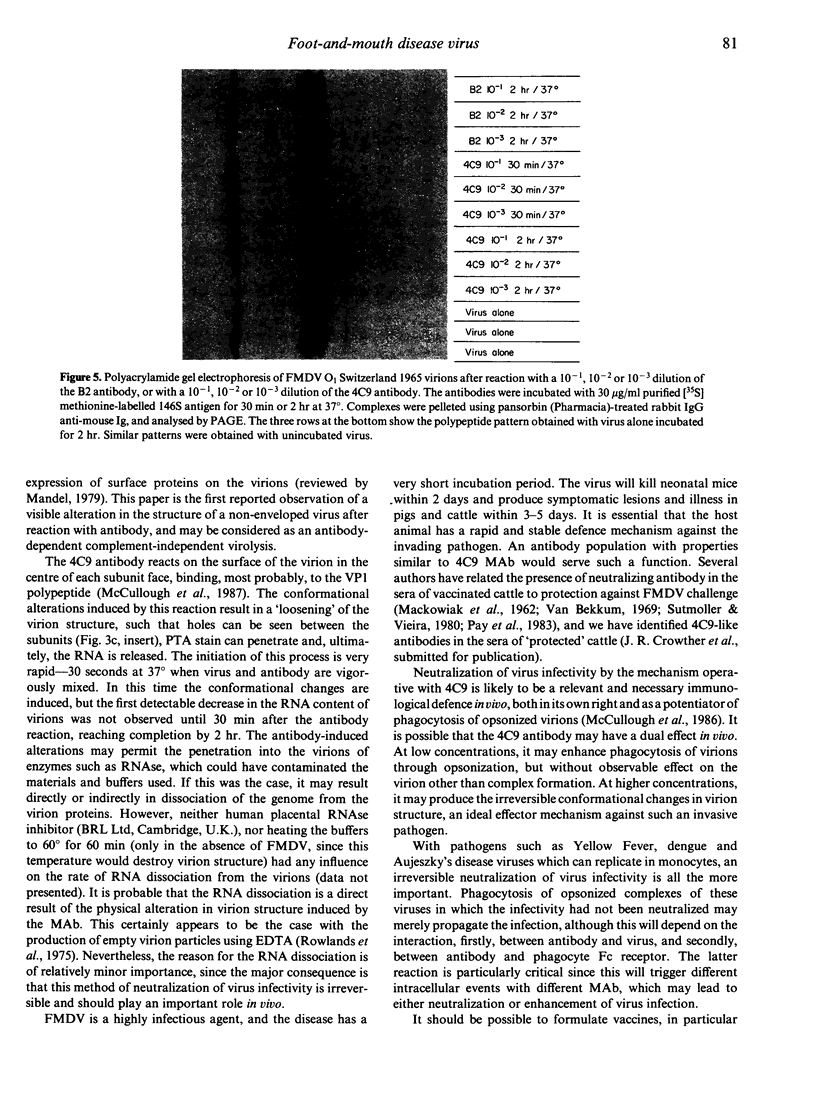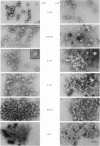Abstract
A mechanism of neutralization of virus infectivity by antibody is described and related to the immune defences in vivo. The interaction of a particular monoclonal antibody with homologous foot-and-mouth disease virus alters the conformation of the virions to permit penetration of staining reagents. A consequence of this structural alteration is that the RNA genome becomes susceptible to dissociation from the capsid proteins. This mechanism of virus neutralization is irreversible and therefore provides an effective in vivo defence measure against virus attack, complementing the enhanced phagocytosis effected through opsonization of virions. With viruses that can replicate in phagocytes, such a mechanism of virus neutralization could provide a major 'specific' immunological defence against virus invasion.
Full text
PDF







Images in this article
Selected References
These references are in PubMed. This may not be the complete list of references from this article.
- BACHRACH H. L., TRAUTMAN R., BREESE S. S., Jr CHEMICAL PHYSICAL PROPERTIES OF VIRTUALLY PURE FOOT-AND-MOUTH DISEASE VIRUS. Am J Vet Res. 1964 Mar;25:333–342. [PubMed] [Google Scholar]
- BROWN F., CARTWRIGHT B. PURIFICATION OF RADIOACTIVE FOOT-AND-MOUTH DISEASE VIRUS. Nature. 1963 Sep 21;199:1168–1170. doi: 10.1038/1991168a0. [DOI] [PubMed] [Google Scholar]
- Dimmock N. J. Mechanisms of neutralization of animal viruses. J Gen Virol. 1984 Jun;65(Pt 6):1015–1022. doi: 10.1099/0022-1317-65-6-1015. [DOI] [PubMed] [Google Scholar]
- Laemmli U. K. Cleavage of structural proteins during the assembly of the head of bacteriophage T4. Nature. 1970 Aug 15;227(5259):680–685. doi: 10.1038/227680a0. [DOI] [PubMed] [Google Scholar]
- MACKOWIAK C., LANG R., FONTAINE J., CAMAND R., PETERMANN H. G. [Relation between the titer of neutralizing antibodies and the protection of animals following anti-aphthous vaccination]. Ann Inst Pasteur (Paris) 1962 Aug;103:252–261. [PubMed] [Google Scholar]
- McCullough K. C., Butcher R. Monoclonal antibodies against foot-and-mouth disease virus 146S and 12S particles. Arch Virol. 1982;74(1):1–9. doi: 10.1007/BF01320777. [DOI] [PubMed] [Google Scholar]
- McCullough K. C., Crowther J. R., Butcher R. N., Carpenter W. C., Brocchi E., Capucci L., De Simone F. Immune protection against foot-and-mouth disease virus studied using virus-neutralizing and non-neutralizing concentrations of monoclonal antibodies. Immunology. 1986 Jul;58(3):421–428. [PMC free article] [PubMed] [Google Scholar]
- McCullough K. C. Monoclonal antibodies: implications for virology. Brief review. Arch Virol. 1986;87(1-2):1–36. doi: 10.1007/BF01310540. [DOI] [PubMed] [Google Scholar]
- McCullough K. C., Parkinson D. The standardization of a 'spot-test' ELISA for the rapid screening of sera and hybridoma cell products II. The determination of binding capacity, binding ratio and coefficient of variation of different ELISA plates in sandwich and indirect ELISA. J Biol Stand. 1984 Jan;12(1):75–86. doi: 10.1016/s0092-1157(84)80023-2. [DOI] [PubMed] [Google Scholar]
- Miller G. W., Nussenzweig V. A new complement function: solubilization of antigen-antibody aggregates. Proc Natl Acad Sci U S A. 1975 Feb;72(2):418–422. doi: 10.1073/pnas.72.2.418. [DOI] [PMC free article] [PubMed] [Google Scholar]
- Rowlands D. J., Sangar D. V., Brown F. A comparative chemical and serological study of the full and empty particles of foot-and mouth disease virus. J Gen Virol. 1975 Mar;26(3):227–238. doi: 10.1099/0022-1317-26-3-227. [DOI] [PubMed] [Google Scholar]






